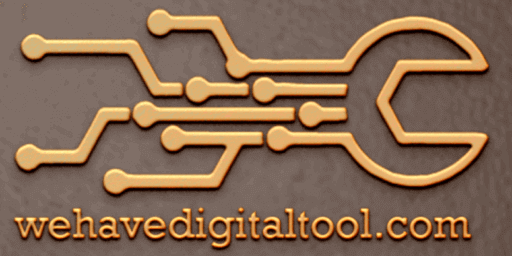Text-to-image The top AI art generators have gone from being in restricted betas to being widely available in less than a year. A sizable cultural movement has evolved out of what began with DALLE 2. Long-standing AI-powered art generators are currently gaining popularity, and new apps with unique perspectives are released every week. By entering a prompt, it seems like almost everyone is producing incredible, amusing, and just bizarre photographs.

This list will be helpful if you wish to participate in the text-to-image trend but are unsure of where to begin. In order to showcase all the varied approaches people are using with AI art generators, it is a longer list than my recommendations for the greatest AI image generators.
However, this is not a complete list of all the apps that can create AI art. Instead, it showcases text-to-image AI art generators that I tested out and found to be functional, accessible through a web app, and that don’t appear to be rip-offs.
By the time you read this, there might be even more excellent apps accessible because the field is evolving so quickly. But for now, it provides a decent summary of the most popular AI painting apps that are now available.
Table of Contents
The top AI art generators
|
|
||
|---|---|---|
|
DALL·E 2 |
Leap AI |
StarryAI |
|
Bing Image Creator |
Crayon |
Fotor |
|
DreamStudio |
getimg.ai |
Runway |
|
Midjourney |
Shutterstock |
WOMBO Dream |
|
Canva |
Deep Dream Generator |
Picsart |
|
NightCafe |
Artbreeder |
CF Spark Art |
|
Jasper Art |
Stablecog |
Pixray |
|
Prodia |
DeepAI |
Let’s Enhance |
How does AI artwork?
It seems magical the first time you enter a command into an artificial intelligence art generator and it actually produces something that exactly fits what you desire. However, it turns out that magic is not used by AI art generators. They carry out their work using computers, machine learning, strong graphics cards, and a tonne of data.
Let’s dissect it.
AI art generators take a language input and attempt to match it as closely as possible with an image. All of these apps must first try to grasp what you are asking because your prompt could be anything. To accomplish this, tens of thousands of thousands, millions, or even billions of image-text combinations are used to train the AI systems. This enables kids to understand the distinctions between, among other things, Vermeers and Picassos and dogs and cats. Depending on the size of their training databases, different art generators comprehend difficult text to varying degrees.
The next step for the AI is to actually render the resulting image. There are two leading kinds of models:
Both kinds of models can produce great, realistic results, though diffusion models are generally better at producing weird or wild images.
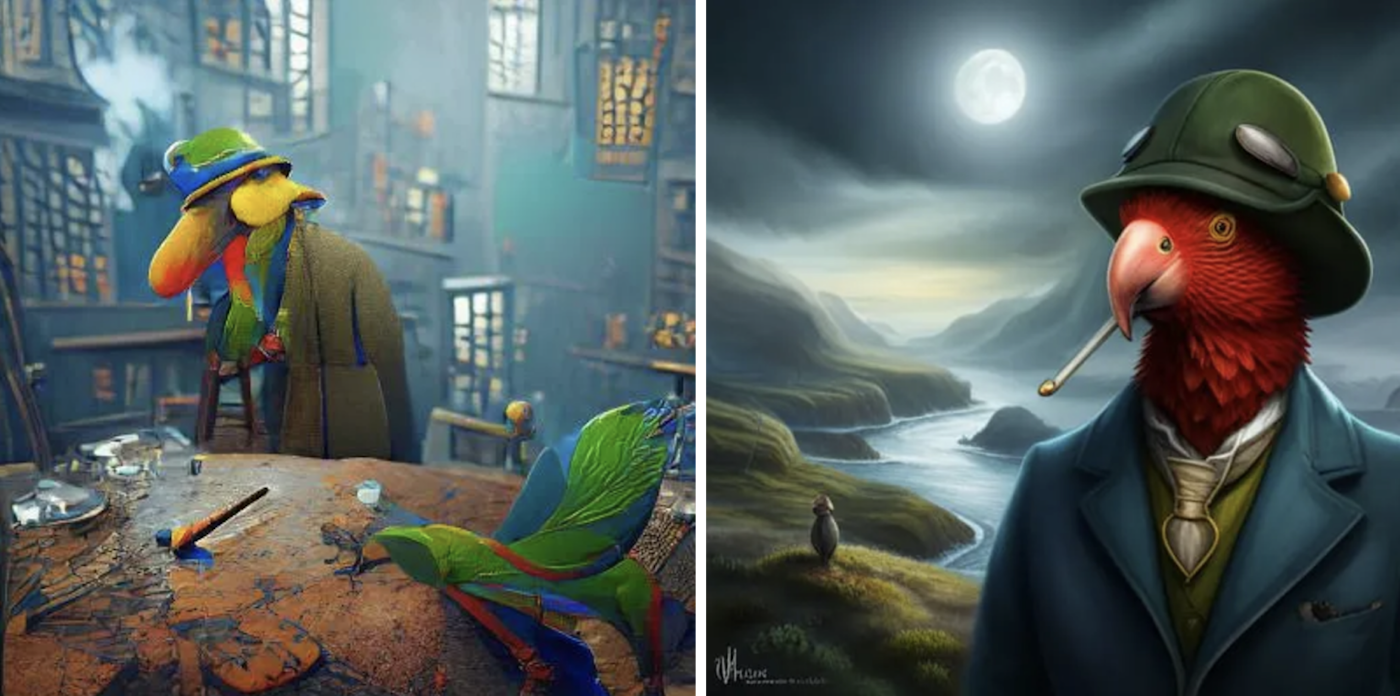
Some programs are quite transparent about the models they employ, while others are not. For instance, since VQGAN-CLIP and Stable Diffusion are both open source, there are many apps that use them openly and many more that don’t. There are more apps that train various open-source models using their own data in order to improve performance.
As a result, a lot of AI art generators are really just various user interfaces with the same art-generating algorithms underneath. This makes sense in certain ways from a business perspective. However, it can be frustrating when deciding which app to use (or write about). I’ve attempted to list the models that each program uses. I’ve made assumptions based on my expertise with all these different generative AIs when it isn’t explicitly stated.
How to use AI image generation at work
Interested in AI, but not quite sure how you’d use it at work? Here are a few of the ways people are turning to AI image generation in their roles:
-
Generating hero images for blog posts
-
Creating social media posts
-
Generating slide decks and storyboards
-
Creating personalized images for customers
Learn more about how to use AI image generation at work
.
24 AI art generators you can use right now
DALL·E 2
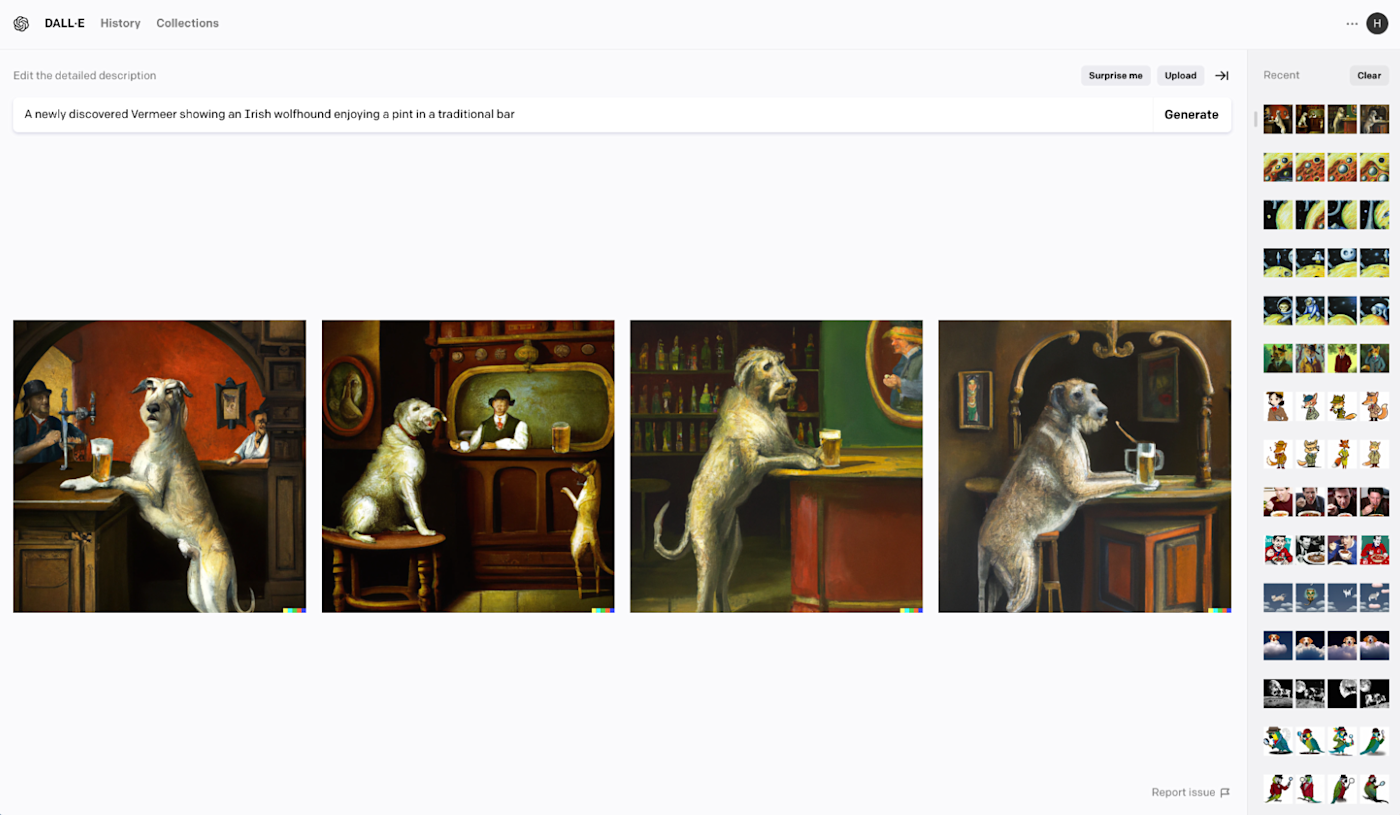
AI art models: DALL·E 2
Platform: Web
Pricing: $15 for 115 credits (1 credit = 1 prompt with 4 options)
The AI art generator known as DALLE 2 is what started the whole trend. Even though it no longer offers a free trial, it’s still one of the best apps available. It’s easy to use and can deliver excellent results. Because of this, a large number of the other apps on this list also use its API.
Through the use of Zapier, you can link DALLE to thousands of other apps, which enables you to use DALLE as part of your business operations. You could, for instance, make images based on Slack messages and send them back to Slack (or do the same in Discord), or you could make images for fresh Airtable records.
Bing Image Creator
AI art models: DALL·E 2
Platform: Web
Pricing: Free
The upshot of Microsoft’s collaboration with OpenAI is Bing Image Creator. Although it utilizes DALLE 2, it is currently free. Even if you’ve used DALLE 2 before, the default styles are a little different, so it’s worth a look.
DreamStudio (Stable Diffusion)
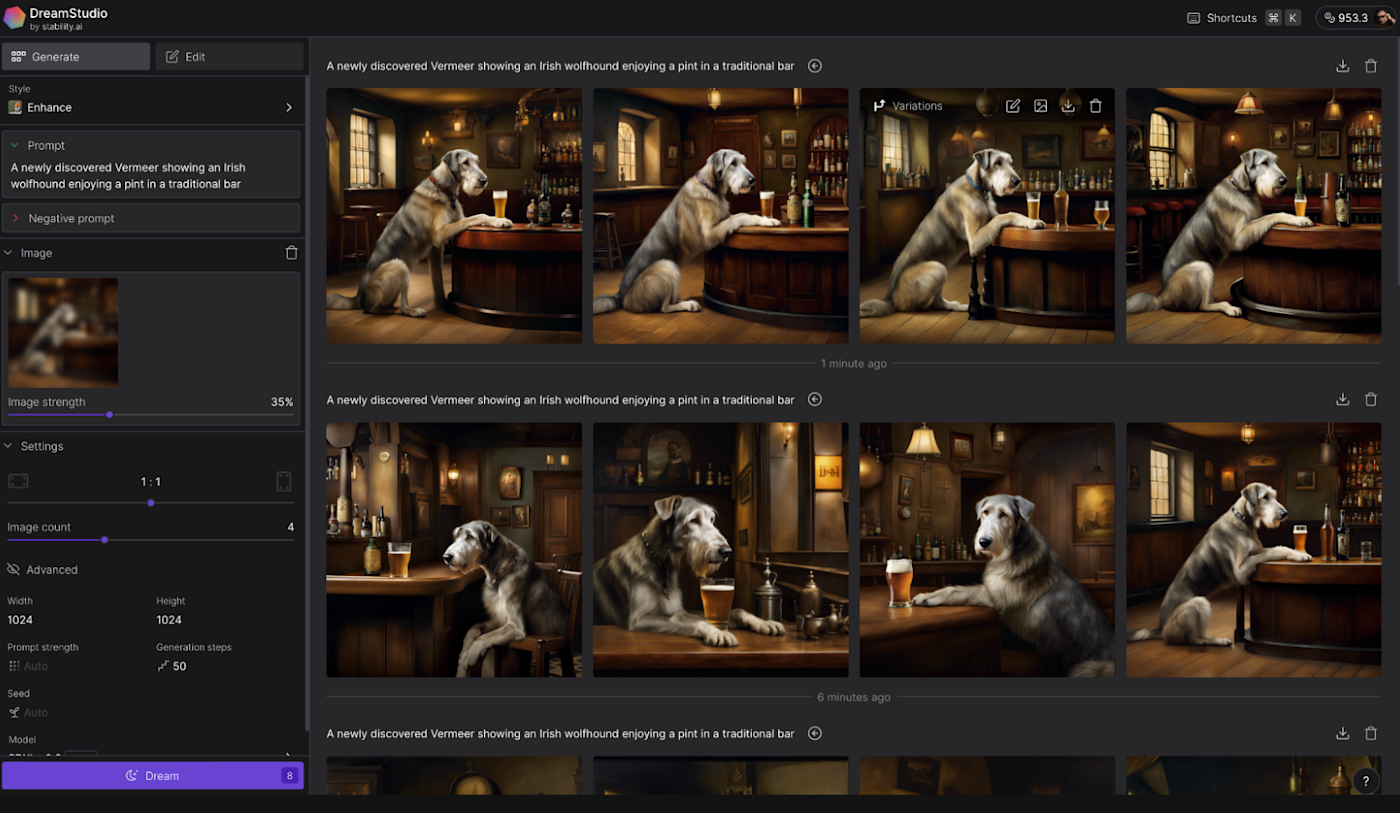
AI art models: Stable Diffusion
Platform: Web
Pricing: Free for 25 credits; $10 for 1,000 credits (enough for ~1,200 images with the default settings)
The official Stable Diffusion web app is DreamStudio. You can customise a lot of things about it, including how many steps the AI takes and the random seed it uses. There is a wonderful free trial option as well.
Midjourney
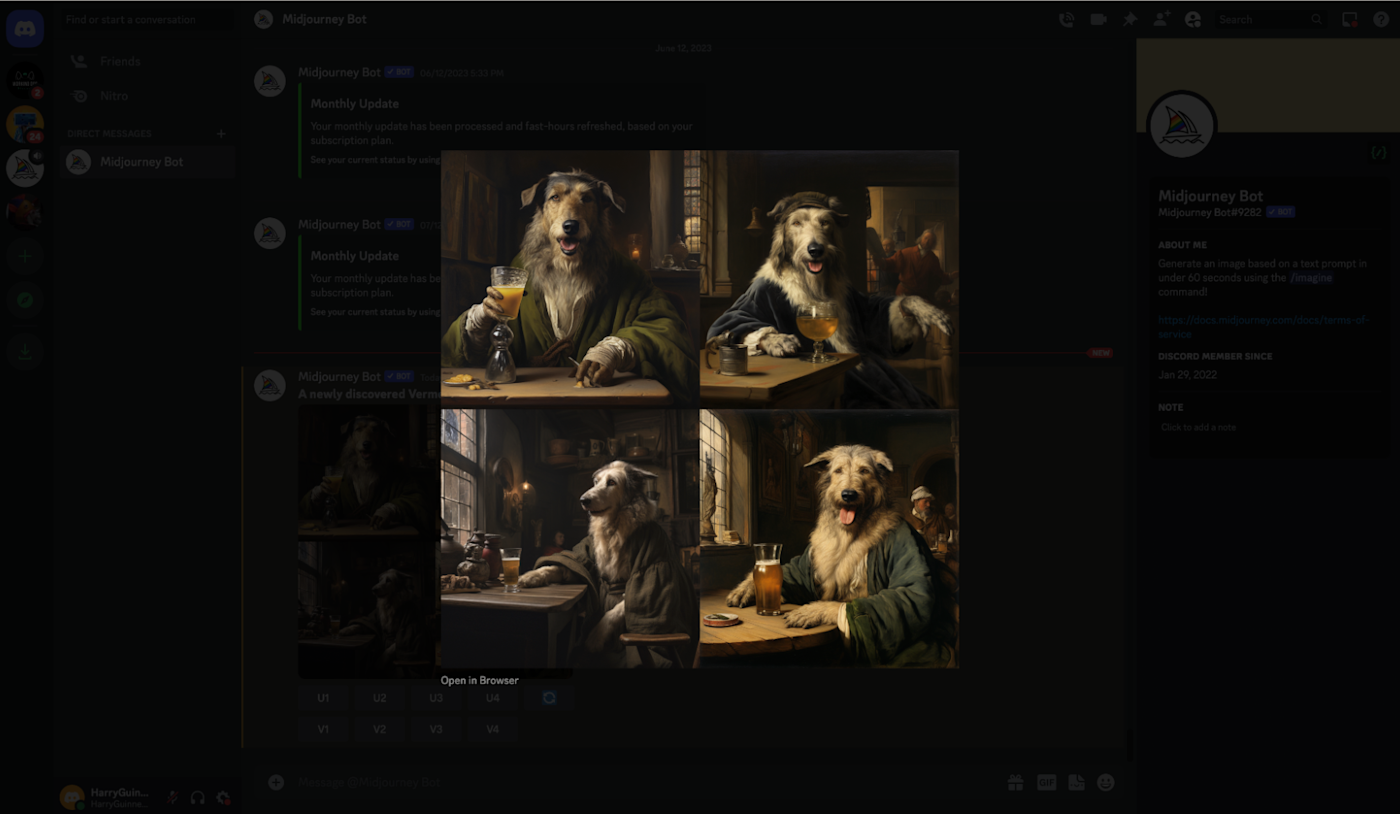
AI art models: Midjourney
Platform: Discord
Pricing: From $10 for 3.3 hours of GPU time per month (enough for ~200 prompts with 4 image options)
Midjourney consistently generates some of the best-looking, most realistic outcomes, while having one of the strongest user interfaces (you access it through the chat application Discord). It is the AI art generator I personally prefer.
Canva
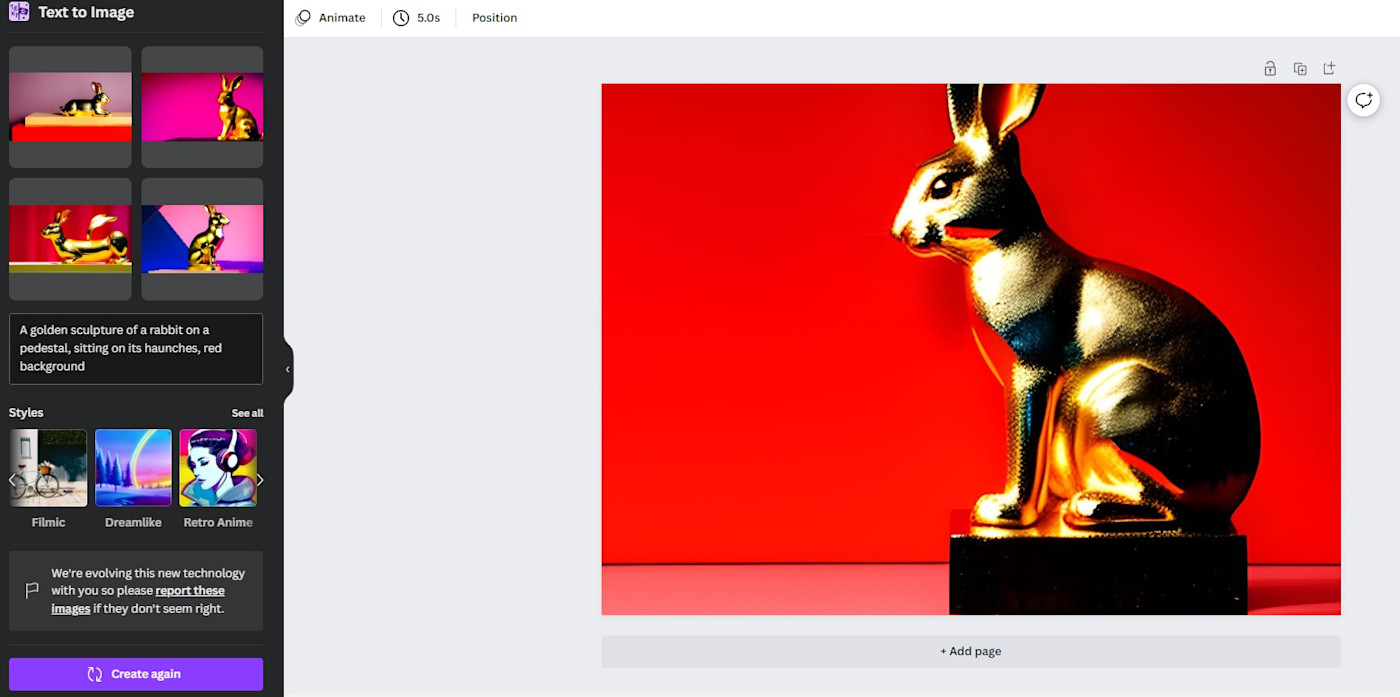
AI art models: Stable Diffusion
Platform: Web, iOS, Android
Pricing: Free; from $12.99/month for Pro with more AI features
Recently, a text-to-image art generator was added to Canva. The rest of the template-based design tool seamlessly interfaces with it, enabling you to add AI-generated graphics to everything from social media posts to greeting cards.
NightCafe
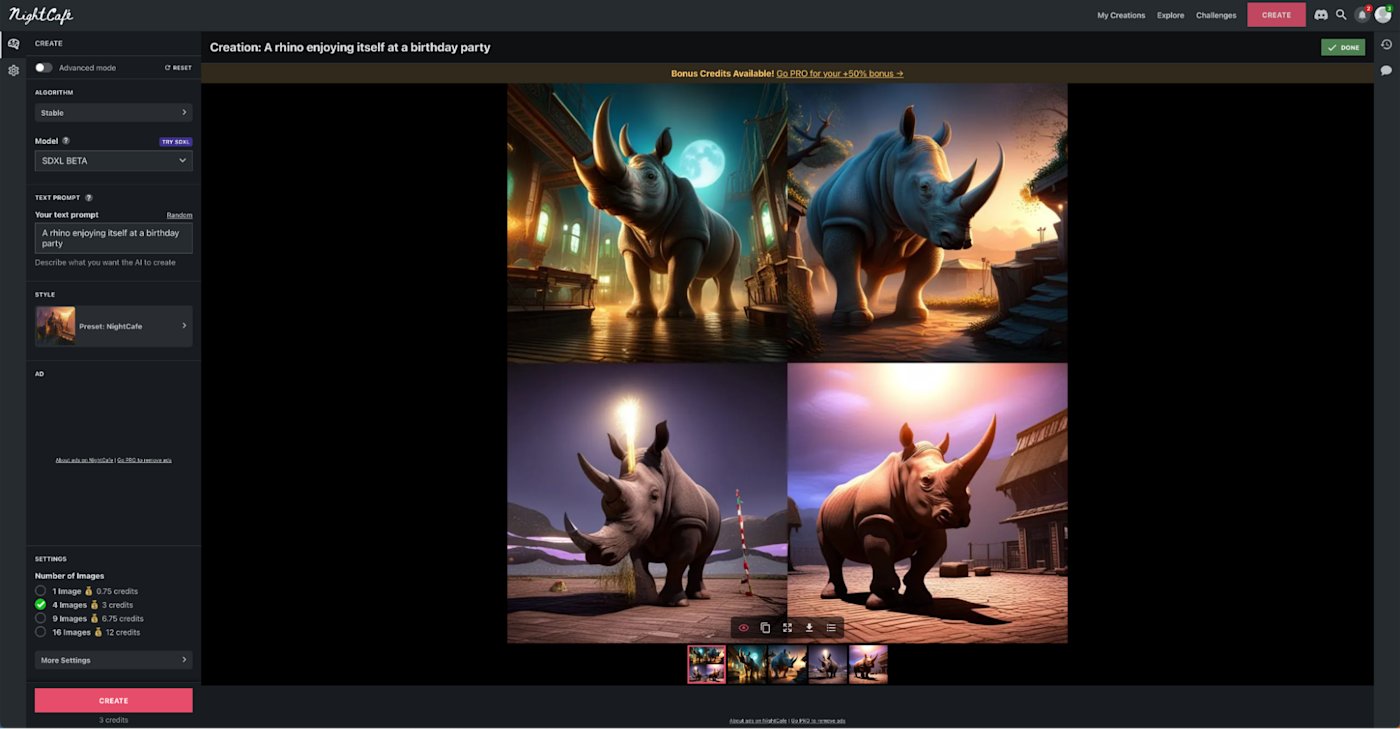
AI art models: Stable Diffusion, DALL·E 2, CLIP-Guided Diffusion, VQGAN-CLIP
Platform: Web
Pricing: From $6/month for 100 credits (enough for ~1,240 images per month)
DALLE 2 and Stable Diffusion gain more features including styles from NightCafe, and you can also use earlier generative art models. More importantly, NightCafe is a Discord server, gallery, and challenge platform for fans of AI art.
Jasper Art

AI art models: Doesn’t say, but appears to be based on Stable Diffusion
Platform: Web
Pricing: From $39/month for unlimited images
Although Jasper is widely known as one of the top AI writing generators, it also features a respectable art generator. If you currently use Jasper, it’s worth a look even if it costs more than many of the other programs on our list.
Writesonic and Rytr, two other AI writing tools, both provide AI-generated art, but Jasper’s is unique in that it’s more of a stand-alone tool.
Prodia
AI art models: Stable Diffusion and other open source models
Platform: Web
Pricing: Free for unlimited images one at a time; from $4.99 for faster images two at a time.
Prodia is a different Stable Diffusion-based art generator that allows you to test all of its models without needing to create an account. Prodia also has a Zapier connection, allowing you to automatically generate images on Prodia in response to triggers in other apps.
Leap AI
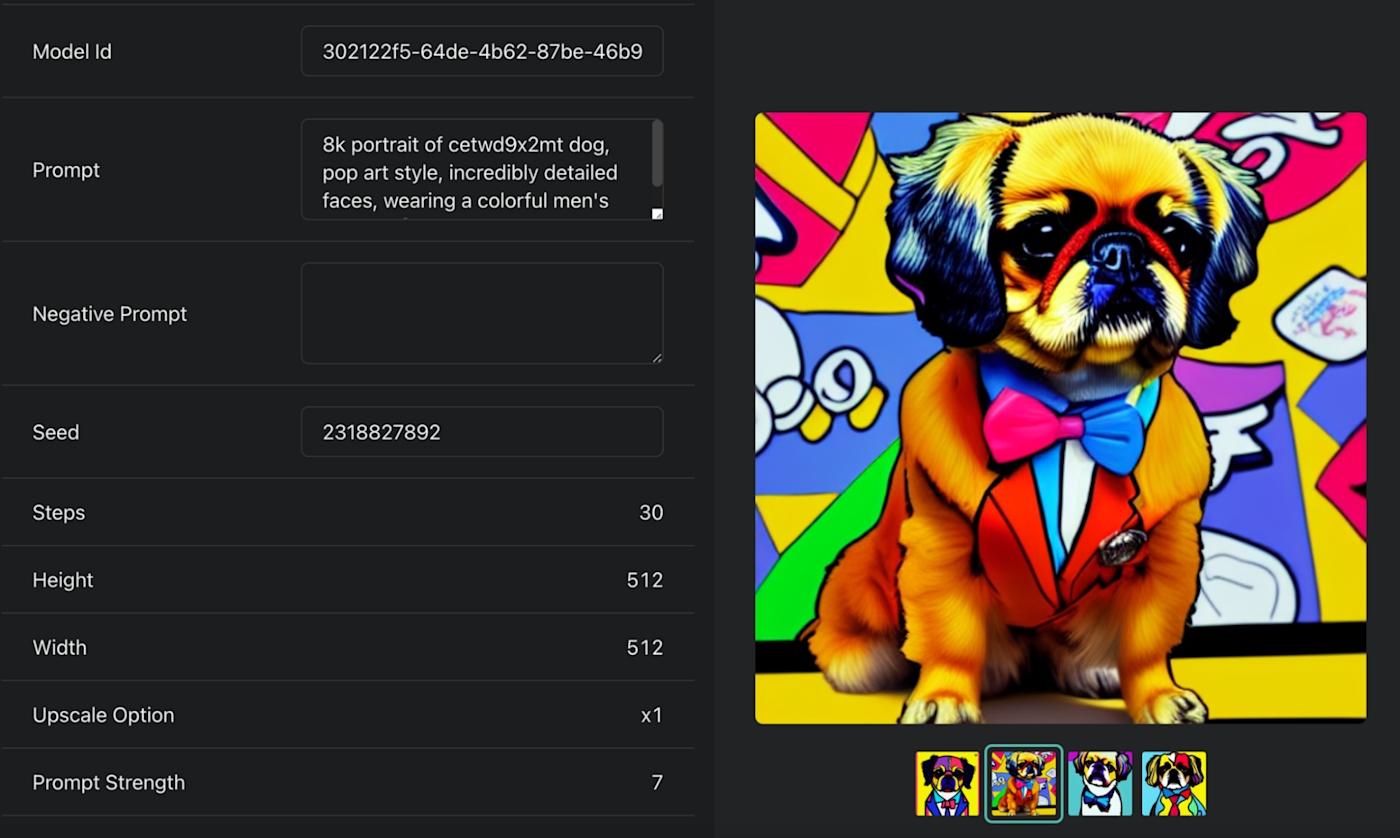
AI art models: Stable Diffusion and other open-source models
Platform: Web
Pricing: Free for 100 images and 1 model; then from $0.005/image and $2/model
If you want to create your own AI art models, Leap AI is a fantastic choice. Even though many of its capabilities are geared towards engineers, anyone can train their own AI with it because it’s so simple to use. Additionally, Leap AI interfaces with Zapier, allowing you to perform tasks like creating pictures based on fresh Google Sheets rows or Discord messages.
Craiyon

AI art models: Based on the original DALL·E model (Not DALL·E 2)
Platform: Web
Pricing: Free; from $6/month for faster images and no watermark
Other categories of AI art generators
There are many different types of artificial intelligence (AI) art creators; this list is specifically focused on text-to-image art generators. Some instances:
These are the only AI art generators that are currently accessible. Firefly, a tool that will connect with Photoshop, is now undergoing beta testing by Adobe. Additionally, you could always use one of the programs I mentioned to train your own.
Which AI art generator should you use?
It can be difficult to know where to begin when there are so many AI art generators available. So let me summarise:
Otherwise, just scroll through the list and try whichever ones strike your fancy. You can’t go too far wrong.
